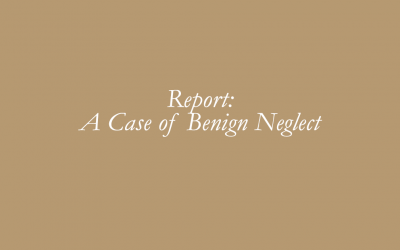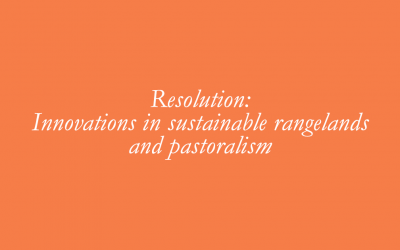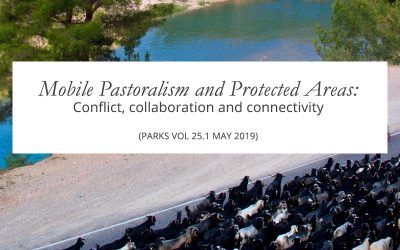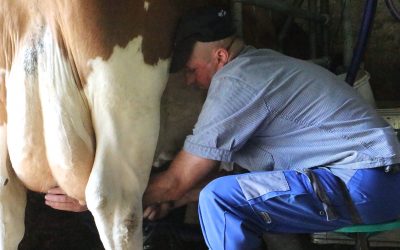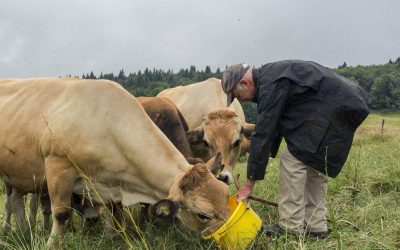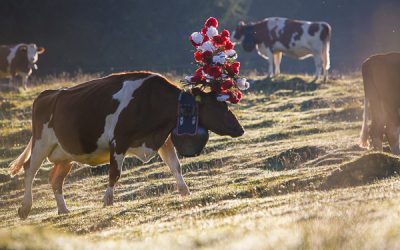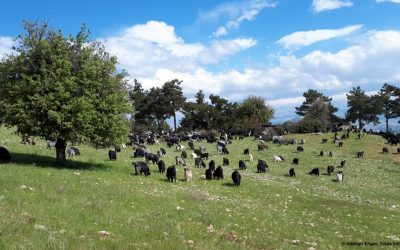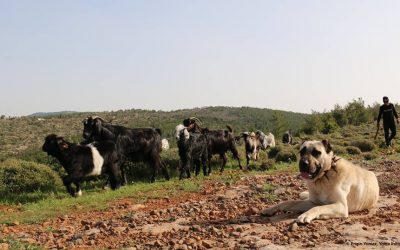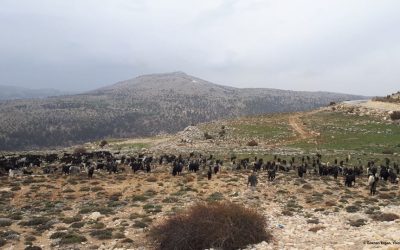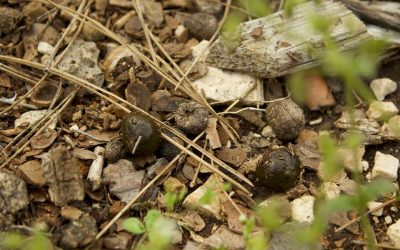Transhumance and Vultures
Mobile pastoralism is the most sustainable livestock management system for people and nature. For thousands of years, mobile pastoralists have been moving through the rangelands with their herds, acknowledging their constant interaction and symbiosis with nature. Interaction between transhumant shepherds in Spain and vultures is a good example of this mutualism which benefits both parties.
Spain is home to more than 90% of European Vultures. Among others, one reason for this high figure is the presence of extensive livestock management systems, including transhumance. Transhumance ensures vulture populations with an availability of safe food (safer than most vulture feeding sites) and although unpredictable regarding time and place, they also help maintain suitable habitats for vultures to scavenge wild prey. In return vultures clean up carcasses and other organic waste preventing the spread of diseases and helping curb greenhouse gas emissions generated by artificial carcass collection and transportation to processing plants. Vultures also help prevent the increase of predator populations (such as feral dogs) by reducing the amount of carrion available in the field.
Adverse policies affect both transhumance and vultures in Spain, as the latter are endangered by certain veterinary drugs such as Veterinary Diclofenac.
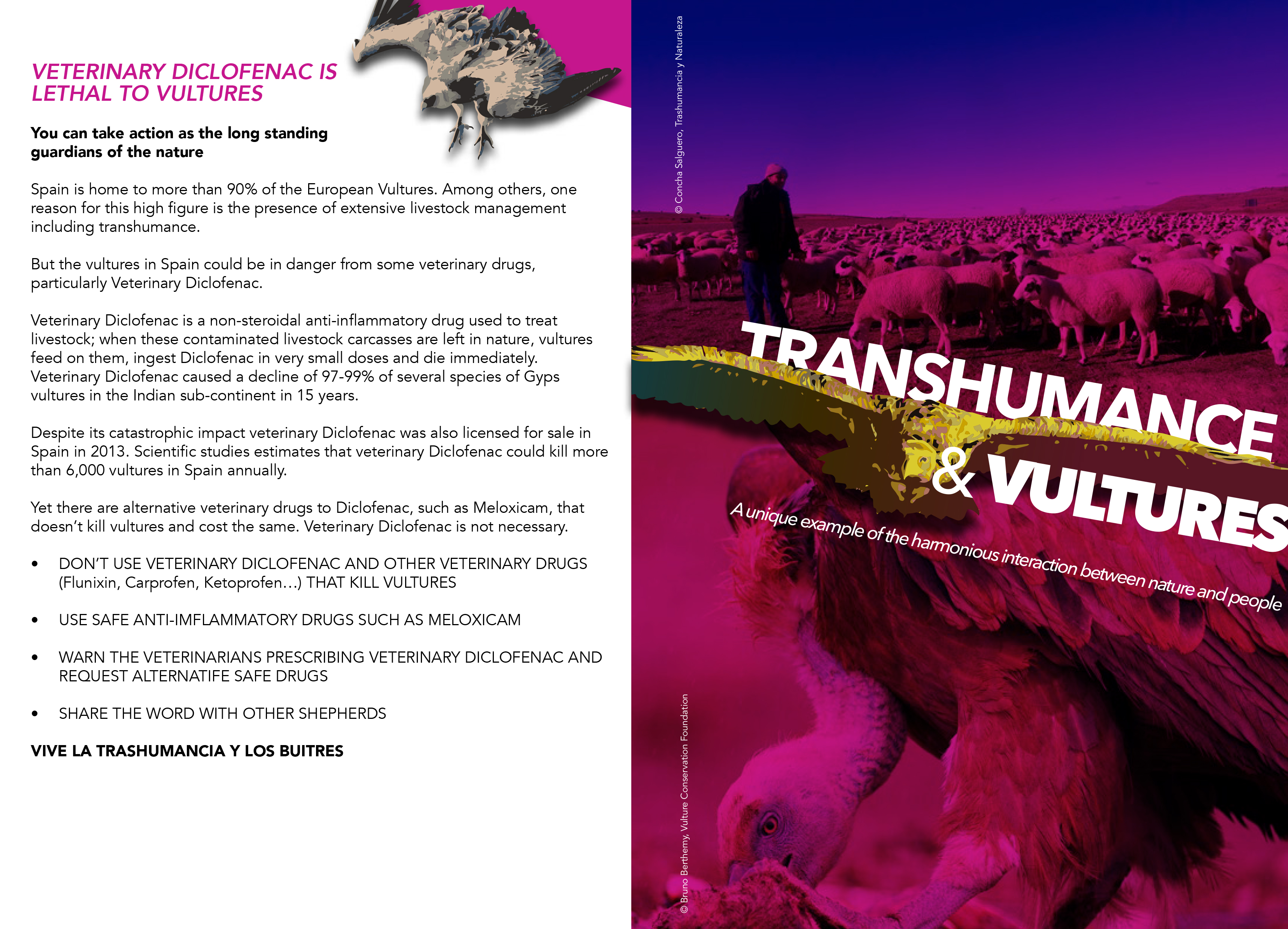
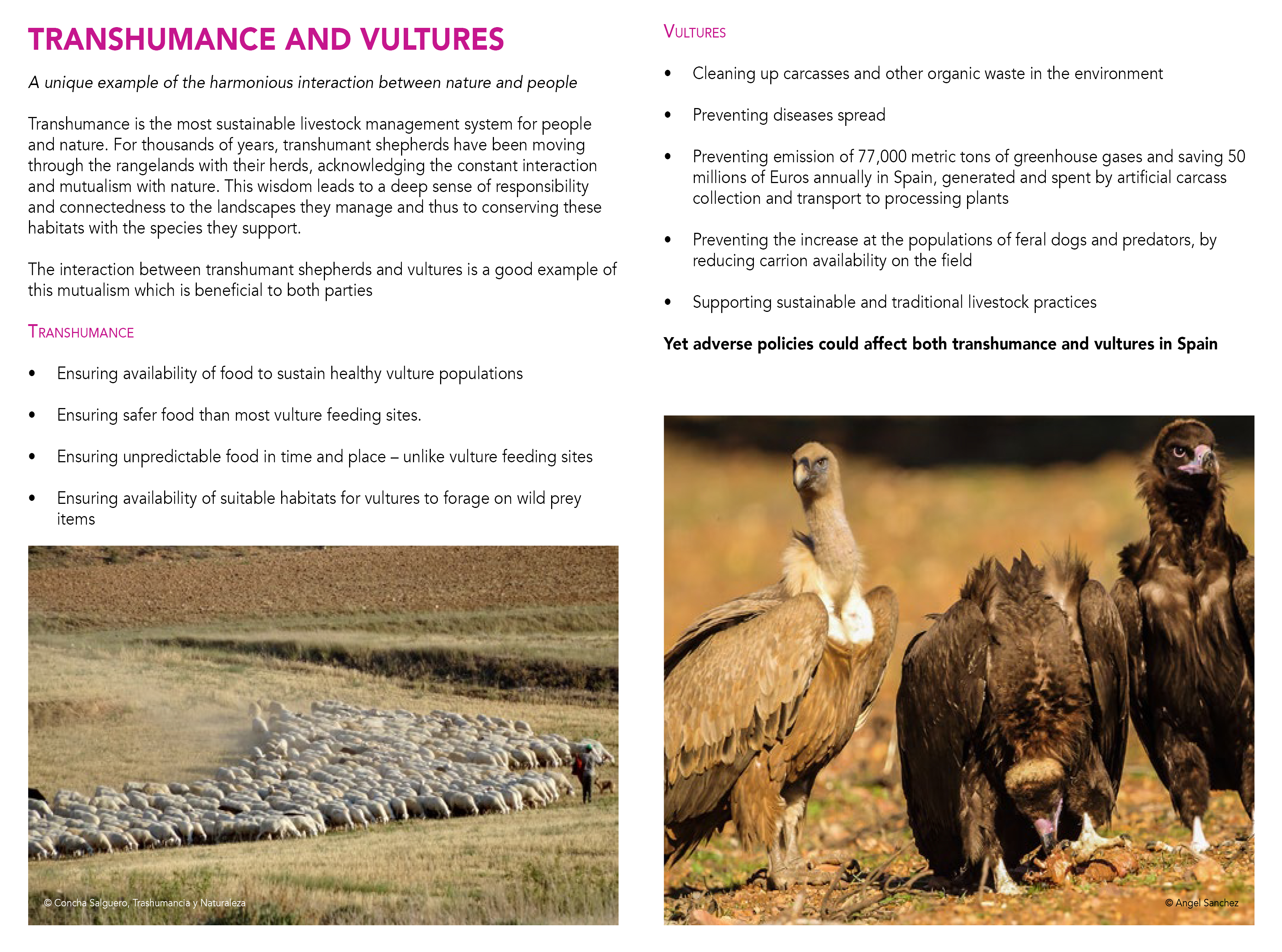
Veterinary Diclofenac is a non-steroid anti-inflammatory drug used to treat livestock. When vultures feed on the drugged livestock carcasses left in nature, they ingest Diclofenac in very small doses and die immediately. Veterinary Diclofenac has caused a decline of 97-99% of several species of Gyps vultures in the Indian sub-continent over the last 15 years. Despite it’s catastrophic impact veterinary Diclofenac was licensed for sale in Spain in 2013. Scientific studies estimates that veterinary Diclofenac kills more than 6,000 vultures in Spain annually.
To address the issue Yolda Initiative and Asociacion Trashumancia y Natureleza, in collaboration with the Vulture Conservation Foundation, ran a communications campaign which disseminated a leaflet on the issue and called for Spanish transhumant shepherds to take action as long-standing guardians of nature. Benefitting from events at which transhumant shepherds gather, such as the Livestock Fair in La Carolina, Jaen (one of the most of important gatherings in Spain), Yolda Initiative and Asociacion Trashumancia y Naturaleza collaborated with the Municipality of La Carolina and through their presentations demonstrated how nature conservationists and mobile pastoralists can initiate a dialogue towards collaboration for the sake of conserving both the practice and the environment.
Read our stories from partners and practitioners.
Read our stories from partners and practitioners.
Report: A Case of Benign Neglect
The UN Environment Programme Report: "A case of benign neglect: Knowledge gaps about sustainability in pastoralism and rangelands", which we have contributed to, directly responds to one of the UN resolutions which acknowledges the dearth of information on pastoralism...
Resolution: Innovations in sustainable rangelands and pastoralism
Through the joint contributions of the International Support Group for International Year of Rangelands and Pastoralists (IYRP) initiative that we are a member of, the "Innovations in sustainable rangelands and pastoralism” resolution passed by the UN Environment...
New Resource: Mobile Pastoralism and Protected Areas
Our latest paper titled "Mobile Pastoralism and Protected Areas: Conflict, Collaboration and Connectivity" has just been published in PARKS: The International Journal of Protected Areas and Conservation. In this paper we considered the many benefits of mobile...
Interviewing Swiss Shepherds
To better understand the practice of mobile pastoralism in Switzerland, DiversEarth's Sandra Spissinger and intern Jade Boudet spent two days interviewing and photographing three shepherds - all very different in character and way of working. The first - Mr. Imberti -...
Meeting the Last Mobile Pastoralists of Geneva
To better understand the practice of mobile pastoralism in Switzerland, DiversEarth's Sandra Spissinger and intern Jade Boudet spent two days interviewing and photographing three shepherds - all very different in character and way of working. The first - Mr. Imberti -...
Désalpe: Welcoming the Cows Home in Switzerland.
The photos celebrate the Désalpe 2014, when the herds descent onto St Cergue Crassier from the pastures. The beauty of this practice connects generations, and has been beautifully captured by the photographer along with the excitement of the whole event. Although the...
Mobile Pastoralism is the most Climate Friendly Livestock Farming System (Day 14)
It's almost as if pastures along migration routes expect these short stay visitors each year. Without goats this photograph wouldn’t be complete. Pastures are one of the largest carbon sinks on the planet. Mobile pastoralism must be used as a critical tool in the...
Mobile Pastoralists know how to Coexist with Wildlife (Day 13)
Guardian herding dogs are a mobile pastoralist's best friend. The Bacak family think that this young pup, that they have been training to protect the herd against wolf attacks, is a promising one. Living with carnivores on a daily basis have enabled mobile...
Mobile Pastoralism Contributes to Habitat Heterogeneity (Day 12)
On the 12th day, th Bacak family of Sarıkeçili nomadic pastoralists travelled 104km up to an altutude of 1666 meters. Having now reached the top of the Taurus Mountains the herd starts to move towards the steppes of central Anatolia. Mobile pastoralists who cross a...
The Mobility of Pastoralists Contributes to Seed Dispersal (Day 10)
Based on the needs of the herd, the geographic conditions in each landscape, and the day they wake up to, The Bacak family decide when to move fast or slow or to rest. On the 10th Day, they cover a distance of 73km. Both the family and herd enjoy tasting the different...

